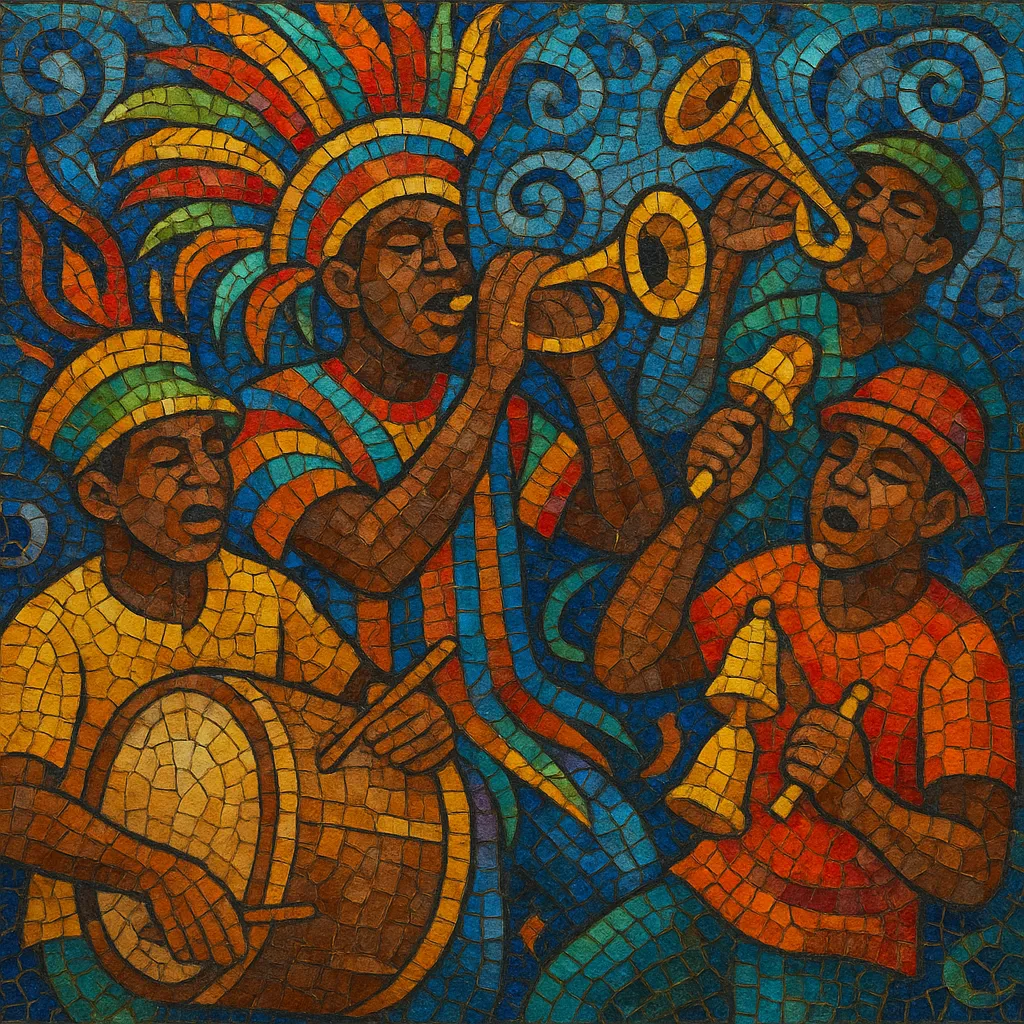Junkanoo is a high-energy Bahamian street parade music performed with drums, cowbells, whistles, horns, and chanted vocals. It is inseparable from the Boxing Day and New Year’s Day "rush-outs" in Nassau and other Bahamian islands, where costumed groups march and dance through the streets.
Rooted in West African festival traditions maintained by enslaved Africans in the Bahamas, Junkanoo features polyrhythmic goatskin-drum ensembles, insistent cowbell ostinatos, and call-and-response chants. In the 20th century, brass sections and modern percussion expanded the ensemble, giving it a powerful, celebratory sound that blends indigenous Bahamian rhythms with Caribbean popular influences.
The music’s purpose is participatory and processional: to drive movement, animate elaborate costumes, and energize the crowd. Typical tempos are brisk and danceable, with textures built from layered rhythmic parts and short, catchy horn riffs.
Junkanoo emerged in the Bahamas during the slavery era, with antecedents in West African festival and masking traditions brought across the Atlantic. Enslaved Africans were typically granted brief Christmastime holidays, during which they created processional celebrations using goatskin drums, cowbells, whistles, and call-and-response songs. The practice took root in Nassau and other islands and became a central expression of Bahamian identity.
The name is often linked to “John Canoe” (also spelled Jonkonnu/Jonkanoo in other islands), possibly referencing an Akan figure or deriving from West African terms. While similar masquerade traditions existed around the Caribbean, the Bahamian form developed its own distinct rhythmic feel, instrumentation, and organizational structure.
In the early–mid 1900s, Junkanoo parades (locally called “rushin’”) became more formally organized into competing groups. As brass band practices and American marching-band sonorities spread, trumpets, trombones, and sousaphones joined the traditional drum-and-cowbell core, amplifying the music’s impact on large streets and bleachers. Repertoire expanded to include original chants, topical songs, and arrangements of popular Caribbean tunes with Junkanoo rhythms.
The costuming tradition—crepe-paper suits and towering headdresses—evolved alongside the music, increasing the need for driving, tightly synchronized rhythms to support precise choreography and long processions.
Today, major Nassau groups such as the Saxons, Valley Boys, One Family, Roots, and Music Makers lead large, rehearsed ensembles that compete on Boxing Day and New Year’s Day. Junkanoo’s sound also appears in Bahamian popular music, from Ronnie Butler and The Beginning of the End to Baha Men, taking Junkanoo rhythms to international audiences.
The tradition remains a living community practice—anchored in neighborhood workshops, drum-making, and months of rehearsal—while continuing to influence Caribbean and Caribbean-diaspora music and festival culture.


